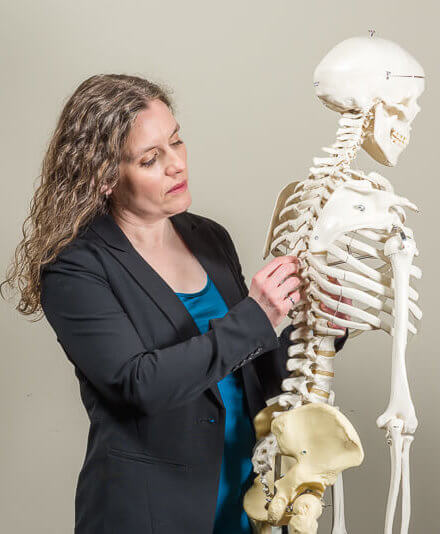
Demystifying slip, trip and fall claims
As we are approaching winter there will be an increase in slip and fall claims. But ice of course isn’t the only cause of slip trip and fall incidents. Today we are talking to Rebecca Moss, biomechanical engineer, and Engineering Manager – Western Canada, about slips and trips.
- Firstly, can you tell us what the difference is between a slip and a trip?
A slip occurs when your foot loses traction with the surface. This could happen when your heel touches the ground and slips away in front of you, or when you are pushing off with your toe.
When you trip you experience a loss of balance because something interfered with the natural movement of the foot. This is more likely to happen while your foot is swinging forward and catches on something like a raised crack in the sidewalk. It only takes something that is 1-2 cm high to cause an issue. This could also include loose objects like a jumble of string in the walkway.
- What are the common causes of slip incidents?
Improper cleaning products or procedures can create a film on the surface. And dust or powders, when they are rounded particles, can act like ball bearings, and create a highly slippery interface between the foot and the surface. And of course, spilled liquids pose a hazard.
- So, why can we walk on ice?
It often depends on whether we are expecting it to be slippery and can alter our walking pattern accordingly, and on how the slipperiness of the surface compares to the adjacent surface. If there is a large difference in slip resistance between the surface from one step to the next, it can cause someone to slip even if each surface in isolation may not be super slippery.
- What are the common causes of trip incidents?
Uneven flooring (not even just cracks, there can be an unexpected bump or incline in the floor) that interfere with your foot swinging forward are the most common causes. Unsecured carpets (that are either curling up at the edges or are wrinkled in the middle) also create opportunities to snag your foot.
These are just examples for level surfaces, slip and trips can also occur for other reasons on stairs, because of inconsistencies in dimensions of the stairs or inappropriate stair depth (either too long or too short) or nosings that are too long, to name a few. (Nosings is the lip the sticks out from the face of the stair.)
- How does age contribute to the likelihood of a fall?
As we all know our body changes as we get older. And this is also the case with the way we walk. As we age our step length reduces and there is an increased variability between the steps we take. Our ground clearance also decreases. This is the minimum distance between your foot and the ground during the swing phase of your gait, so while you are swinging your foot forward. Older people also have a reduced dynamic balance, so they can’t recover as quickly when put off balance and are more likely to fall. Their reaction time is also reduced.
Another, interesting case that you might see is when someone is new to bifocals or progressives. They may not yet be used to where the progressives are in their vision and they may be looking down at the stairs and the progressive portion will distort where the actual edge of the stair is, causing them to misstep. And the same could occur on an uneven or rocky surface walking downhill on a nature trail.
- What information do you need when working on a slip and fall incident?
Detailed descriptions of the incident from the injured person and from witnesses is useful, especially if there is some doubt about whether the injuries are related. Having pictures of the area where the incident occurred as soon as possible is very important because ice melts, surface debris is swept away etc. Medical documentation detailing the extent of the injury from the incident helps to assess the mechanism of the injury, and pre-existing medical information may provide insight into whether a person was more susceptible to injury or fall.

- What are some of the common injuries seen in slip and trip incidents?
Well, just because you slip or trip doesn’t necessarily mean that you are going to fall. Sometimes you can recover your balance without issue. But falling is where we are going to see the injuries.
Slipping and falling backwards can result in head impacts, leading to concussion and people falling on to hard surfaces like concrete can sustain more serious head injuries, like basal skull fractures. Falling directly onto the buttocks can cause tailbone fractures, or lower back issues.
When falling forward, people typically, as an automatic reaction, put out their arms to protect themselves and can sustain what you may sometimes hear called a FOOSH injury, an acronym for Fall On Outstretched Hand. These falls can result in wrist, radius or ulna fracture, elbow dislocation, or even rotator cuff injuries.
Wow, that sounds like a lot of possibilities, and ways to be injured! Thanks for the insight Rebecca!
